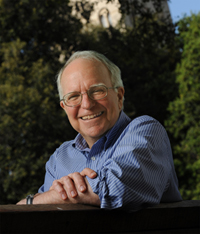

Research
BPEA | 1980 No. 2

1980, No. 2
THE BEHAVIOR of the U.S. stock market over the past decade has puzzled
both academic and lay observers. Recent experience casts doubt on the
traditional belief that common stocks are an ideal hedge against inflation.
Comparisons of the cyclical peak years of 1959, 1968, and 1979 are revealing.
The total nominal return from investing in the market portfolio of
common stocks has a geometric average of just 4.7 percent a year for the
1968-79 period, far less than the rise in consumer prices of 7.0 percent
for the same period. By contrast, stock returns from 1959 to 1968 averaged
9.3 percent while prices rose only 2.1 percent a year. In real terms,
stock prices at the end of 1978 (as represented by the Standard & Poor’s
500) were about half of their historic peak level of 1968. For no other
ten-year period, including the Great Depression, have stocks performed so poorly. This dismal record is only partially explained by aggregate
profit figures. Although the rate of growth of real after-tax corporate
profits for domestic manufacturers, with correction for both inventory
valuation and capital consumption adjustments, has decelerated somewhat
(from 2.8 percent a year for 1959-68 to 1.6 percent for 1968-79),
the recent growth rate is not significantly different from the long-run
growth rate of real corporate profits (1.9 percent for 1948-79). Clearly
the ratio of share prices to after-tax and inflation-adjusted earnings has
shown a significant and unexplained decline.